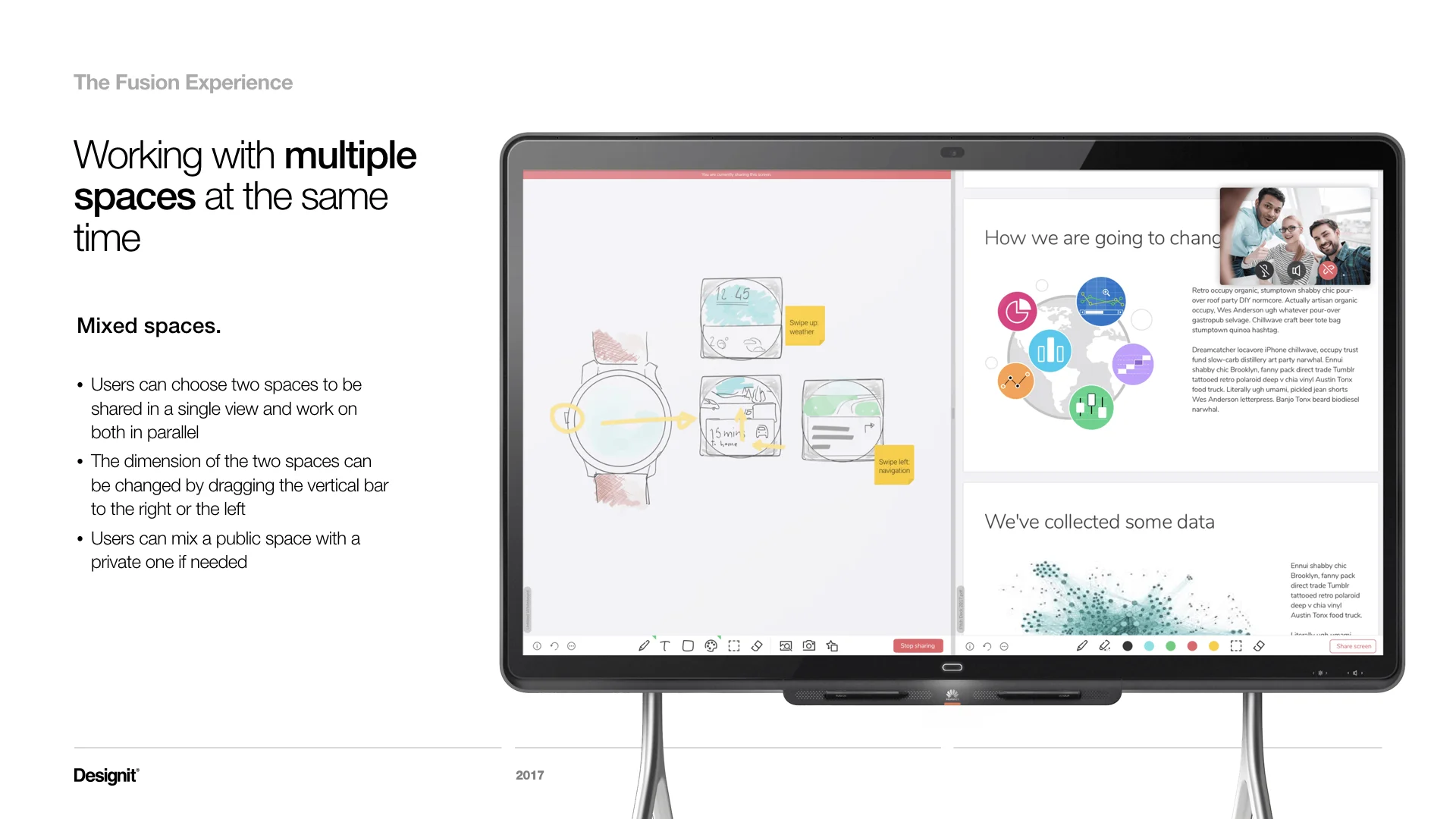Fusion Telepresence system

Background
This client is the biggest telecommunication company in China; among many services they provide they have also a business line covering telepresence systems. The product family was developed organically over the years and the result was a fragmented design language, both from an industrial and digital design perspective.
Scope
The client asked Designit to create a vision for the future of teleworking, developing a tool to connect teams and foster cooperation and co-creation. The project focused on creating a holistic experience to create a detailed concept of the flagship product and to create a design language that can be applied to the whole product family.
My role
I was responsible for the digital design, working in close collaboration with the industrial design lead to manage the project progress and client's requirements.
Product positioning
Design strategy
UX design lead
Visual design lead
Results
Process
Desk research and Competitors Audit
Due to budget restrictions, we couldn't run a real research phase nor access research insights. In order get our shoes into the topic and plan the product strategy we run a desk research aimed both at getting to know how office environments and working behaviours are changing, and to map the market offering in terms of products, features, approaches and styles.
Product Strategy
We identified three main competitors: Google, Microsoft and Cisco; we compared their solutions from different angles: value proposition, target segment, experience, system and platform, design language.
Based on client's goal we refined the scope of the briefing to bring consistency into client's requests and define a product vision.
Experience mapping and Ideation
After the research, we created a UX blueprint to visualise the break down of the user experience along the whole product life-cycle.
It presents both the physical and the digital interactions, highlighting the synergy moments between them.
We used the bodystorming method to have a deeper understanding of usability requirements, relations between users and the digital whiteboard, and possible synergies between the physical object and the software.
The ideation phase was run in parallel by both the industrial design team and the digital design team, we met regularly to challenge and contaminate ideas and to ensure consistency between the two experiences.
UX concept
Ideas were generated to cover the whole user journey and then used to create two different UX concepts, exploring different approaches to the information architecture, windows management, file sync and pairing, and cloud structure. These elements combined together were suggesting different styles and degrees of collaboration, focusing differently on co-operation and co-creation.
Visual concept
We analysed the style of the main competitors' products and we identified a style that was aligned with the brand values and market position.
The visual directions were identified by using mood boards and samples of UI libraries to showcase the same components in different styles.
Design critiques meetings helped us to guide the client to define and select the desired style.
Screen design
After defining the visual style we created mockups for all the screens using sketch and Invision to prototype it and test it with colleagues.
Prototyping for usability
The hardware was a standing 52" screen, meant to be used by multiple people at the same time from short and medium distance. To create a usable and ergonomic product we produced mockups and prototypes at 1:1 scale since the first stages of the project; we started with a paper prototype to validate general proportions already during the definition of the UX concept, and later on we moved to a digital prototype on a 52" screen to ensure readability and usability.
The wizard of oz technique helped us to quickly test ergonomy, mental models, interfaces and interactions: colleagues of various height could interact with the screen whilst an operator was simulating the real behaviours with an Invision prototype.
What happened next?
The project won a IF Design Award 2019 both for the UX/UI and for the product. The project was submitted by the Huawei team.










































